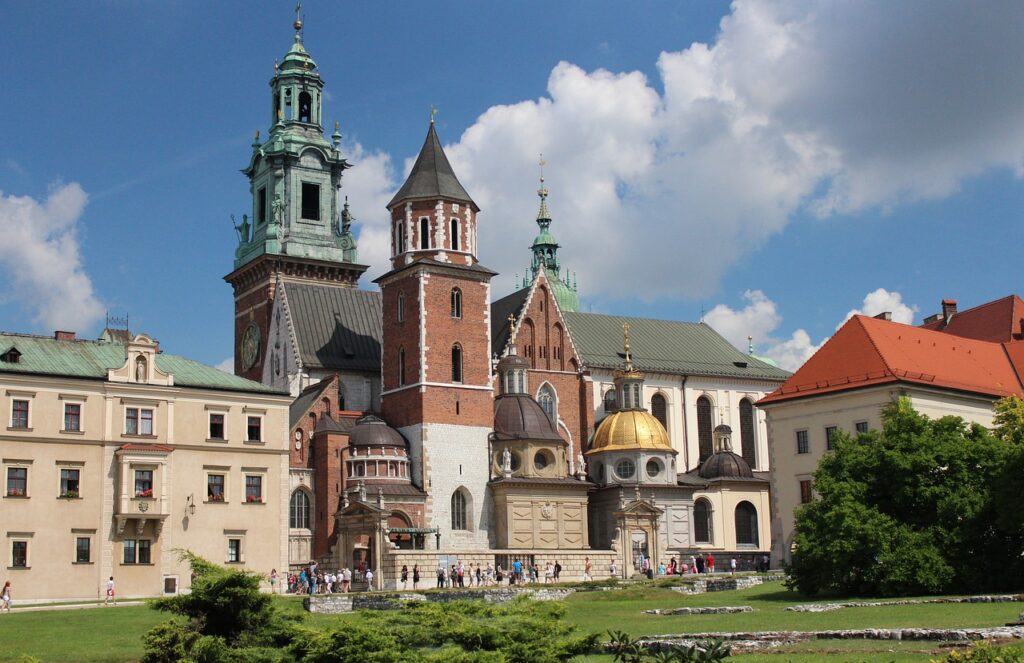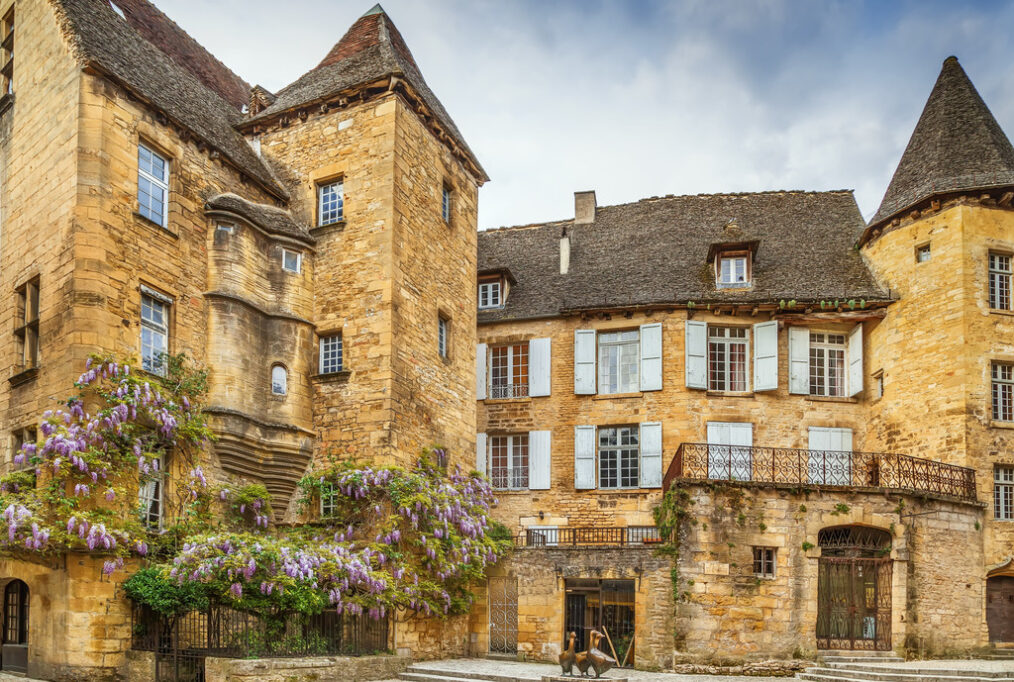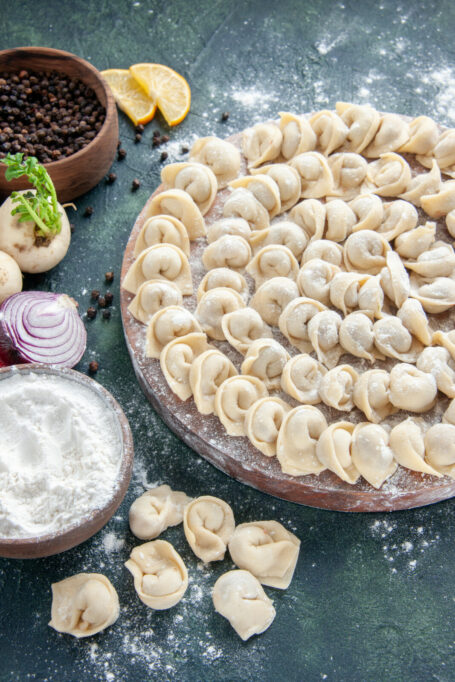POLAND
TRAVEL GUIDE
Discover the Magic of Poland: From Historic Warsaw to Enchanting Krakow, Explore a Land Rich in Culture and Scenic Beauty. Journey through the cobblestone streets of Gdańsk, marvel at the stunning architecture in Wrocław, and immerse yourself in the vibrant arts scene of Łódź. Experience the breathtaking natural landscapes of the Tatra Mountains and the serene lakes of Masuria. Poland offers a diverse and unforgettable travel experience for history buffs, nature lovers, and adventure seekers alike
Poland Itineraries
Need to Know
Why Travel to Poland
Tip: Poland offers medieval history, vibrant cities, and stunning natural landscapes.
Why: From Warsaw’s modern energy to Krakow’s historic charm, Poland blends rich cultural heritage with scenic beauty, including the Tatra Mountains.
How: Explore castles and museums ($3–10), enjoy local cuisine ($2–8), and book tours via Viator ($15–40) for guided experiences.
Do I Need a Visa
Tip: EU, US, and many nationalities get 90-day visa-free entry (Schengen). Others may need a visa ($50–80). Check requirements in advance.
Why: Ensures smooth entry and compliance with Schengen immigration rules.
How: Check via Polish embassy websites ($0). Carry digital passport copies on Google Drive ($0). Have proof of accommodation ready.
What is the Currency of Poland
Tip: The currency is Polish Zloty (PLN). Budget travelers spend PLN 100–200/day ($25–50).
Why: Zloty is used for most transactions; cards are widely accepted in cities.
How: Exchange at banks ($0) or use ATMs (PLN 5–10 fee). Carry small Zloty notes (PLN 10–50). Use Revolut ($0 fees) for better rates.
Is Poland Cheap to Visit
Tip: Poland is affordable, with meals (PLN 10–30, $2–8), hostels (PLN 40–120/night, $10–30), and transport (PLN 2–20, $0.50–5) at low costs.
Why: Budget-friendly options suit backpackers and cultural explorers.
How: Stay in hostels (PLN 40–120). Eat at local milk bars (PLN 10–15). Book via Booking.com ($0) for deals.
Can I Drink the Tap Water
Tip: Tap water is safe in cities like Warsaw and Krakow but use bottled water in rural areas (PLN 2–5, $0.50–1).
Why: Rural water quality varies, and bottled water avoids health risks.
How: Buy bottled water from shops (PLN 2–5). Use reusable bottles with filters ($10–20) in rural areas. Check seals on bottles.
Can I Buy a SIM Card
Tip: Purchase a local SIM card for data and calls (PLN 20–60, $5–15).
Why: Affordable data plans ensure connectivity for navigation and communication.
How: Buy SIMs at airports or shops (PLN 20–60). Top up via mobile apps ($0). Choose providers like Orange or Play.
Enchanting Poland Travel Guide: Your Gateway to Unforgettable Adventures
Welcome to the Enchanting Poland Travel Guide, your essential companion for exploring a Central European gem. Poland captivates with its medieval castles, vibrant cities, and stunning natural landscapes, from Warsaw’s reconstructed Old Town to Krakow’s historic Wawel Castle. This guide covers eight top destinations, cultural experiences, and practical tips to ensure a seamless and unforgettable journey. Whether you’re hiking in Zakopane or exploring Gdansk’s Baltic charm, let this guide inspire your Polish adventure.
How to Get to Poland
Travel Options
Tip: Fly into Warsaw (WAW) or Krakow (KRK) ($500–1200 from North America, $50–200 from Europe). Trains connect from Germany or Czechia ($20–50).
Why: Warsaw and Krakow are main gateways with excellent regional connections.
How: Compare flights on Skyscanner ($0). Take trains from Berlin ($20–50) or Prague ($15–40). Use buses (PLN 10–50, $2–12) or trains within Poland.
Best Time to Visit Poland
Optimal Seasons
Tip: Visit in spring (April–June) or autumn (September–October) for mild weather (10–20°C). Summer (July–August) is warm (20–25°C). Winter (December–February) suits skiing (0–5°C).
Why: Spring and autumn offer pleasant weather and fewer crowds; winter is ideal for mountain activities.
How: Book accommodations early for summer (PLN 80–400/night, $20–100). Pack warm clothing for winter. Check forecasts via AccuWeather ($0).
Top Destinations in Poland
Warsaw
Tip: Visit the Old Town ($0), explore the Royal Castle (PLN 30, $7), and stroll Lazienki Park ($0). Tour the POLIN Museum (PLN 30, $7) or try pierogi (PLN 10–20, $2–5).
Why: Warsaw, Poland’s vibrant capital, blends a reconstructed UNESCO-listed Old Town with modern energy. The Royal Castle showcases royal history, while Lazienki Park offers serene gardens and Chopin concerts. POLIN Museum highlights Poland’s Jewish heritage.
How: Use Warsaw’s trams or metro (PLN 3–5, $0.80–1.20). Book castle tickets online ($0 fees) or tours via Viator (PLN 60–150, $15–40). Try bigos at milk bars (PLN 10–15, $2–4) and visit in summer for park events.
Krakow
Tip: Explore Wawel Castle (PLN 20–30, $5–7), stroll the Main Market Square ($0), and visit Schindler’s Factory (PLN 28, $7). Take a day trip to Auschwitz (PLN 50–100, $12–25) or try obwarzanek (PLN 2–5, $0.50–1).
Why: Krakow, Poland’s cultural heart, boasts a UNESCO-listed Old Town with Wawel Castle’s royal legacy. The vibrant Main Market Square and historic Kazimierz district offer charm, while Auschwitz provides a sobering historical perspective.
How: Take trains from Warsaw (PLN 40–100, $10–25, 2.5 hours). Stay in guesthouses (PLN 40–120, $10–30/night). Book tours via GetYourGuide (PLN 40–100, $10–25), try zapiekanka in Kazimierz (PLN 8–15, $2–4), and visit in autumn for fewer crowds.
Gdansk
Tip: Stroll Dlugi Targ ($0), visit the Amber Museum (PLN 20, $5), and explore the Solidarity Museum (PLN 20, $5). Relax at Sopot Beach ($0) or try fish soup (PLN 10–20, $2–5).
Why: Gdansk, a Baltic gem, features a colorful Old Town with historic Dlugi Targ and Hanseatic architecture. The Amber Museum celebrates Poland’s amber trade, while the Solidarity Museum recounts the fight for freedom, complemented by nearby Sopot’s seaside charm.
How: Take trains from Warsaw (PLN 50–120, $12–30, 3 hours). Stay in hotels (PLN 80–240, $20–60/night). Book tours via Viator (PLN 40–100, $10–25), pack sunscreen for beach days, and visit in summer for Baltic festivals (PLN 0–40, $0–10).
Wroclaw
Tip: Explore Market Square ($0), visit the Panorama of Raclawice (PLN 30, $7), and hunt for dwarf statues ($0). Take a boat tour on the Oder River (PLN 20–40, $5–10) or try barszcz (PLN 8–15, $2–4).
Why: Wroclaw, a vibrant city on the Oder River, boasts a picturesque Market Square and a unique dwarf statue trail. The Panorama of Raclawice offers a stunning historical display, while the city’s bridges and islands create a charming, Venice-like atmosphere.
How: Take trains from Krakow (PLN 30–80, $7–20, 3 hours). Stay in hostels (PLN 40–120, $10–30/night). Book tours via Klook (PLN 40–80, $10–20), wear comfortable shoes for walking, and visit in summer for outdoor festivals (PLN 0–40, $0–10).
Zakopane
Tip: Hike in Tatra National Park ($0–5), visit Krupowki Street ($0), and ride the Gubalowka funicular (PLN 20, $5). Ski in winter (PLN 40–80/day, $10–20) or try oscypek cheese (PLN 5–10, $1–2).
Why: Zakopane, nestled in the Tatra Mountains, is Poland’s premier mountain destination, offering stunning hikes and skiing. Krupowki Street buzzes with local crafts and cuisine, while the Goral culture adds a unique highland flavor to this scenic town.
How: Take buses from Krakow (PLN 20–30, $5–7, 2 hours). Stay in chalets (PLN 40–120, $10–30/night). Book tours via GetYourGuide (PLN 40–100, $10–25), bring warm layers for winter, and visit in winter for skiing or summer for hiking.
Poznan
Tip: Visit the Old Market Square ($0), see the Renaissance Town Hall ($0), and explore the Cathedral Island (PLN 10–20, $2–5). Try St. Martin’s croissants (PLN 5–10, $1–2) or join a brewery tour (PLN 40–80, $10–20).
Why: Poznan, a historic city, boasts a colorful Old Market Square and the ancient Cathedral Island, the birthplace of Poland. The Renaissance Town Hall’s daily goat show and vibrant student culture add a lively, youthful charm to this cultural hub.
How: Take trains from Warsaw (PLN 40–100, $10–25, 3 hours). Stay in guesthouses (PLN 40–120, $10–30/night). Book tours via Viator (PLN 40–80, $10–20), try zurek soup (PLN 8–15, $2–4), and visit in November for St. Martin’s Day events.
Torun
Tip: Visit the UNESCO-listed Old Town ($0), explore the Copernicus House (PLN 15, $4), and see the Leaning Tower ($0). Try gingerbread (PLN 5–10, $1–2) or join a city tour (PLN 40–80, $10–20).
Why: Torun, a medieval gem, is famous for its well-preserved Gothic Old Town and as the birthplace of Copernicus. The Leaning Tower and gingerbread tradition add quirky charm, while the Vistula River offers scenic walks and historic ambiance.
How: Take trains from Gdansk (PLN 20–50, $5–12, 2 hours). Stay in hotels (PLN 80–200, $20–50/night). Book tours via Klook (PLN 40–80, $10–20), wear comfortable shoes for cobblestones, and visit in summer for gingerbread festivals (PLN 0–20, $0–5).
Bialystok
Tip: Visit Branicki Palace ($0–5), explore Bialowieza Forest (PLN 10–20, $2–5), and stroll Kosciuszko Market ($0). Take a bison tour (PLN 40–80, $10–20) or try potato dumplings (PLN 8–15, $2–4).
Why: Bialystok, in Poland’s northeast, offers the elegant Branicki Palace and access to the UNESCO-listed Bialowieza Forest, home to Europe’s last primeval forest and wild bison. The city’s multicultural history and green spaces add unique charm.
How: Take buses from Warsaw (PLN 20–40, $5–10, 3 hours). Stay in guesthouses (PLN 40–120, $10–30/night). Book forest tours via GetYourGuide (PLN 40–100, $10–25), bring binoculars for wildlife, and visit in summer for forest hikes.
Cultural Experiences and Tips
Polish Cuisine
Tip: Try pierogi (PLN 10–20, $2–5), bigos (PLN 10–15, $2–4), or oscypek cheese (PLN 5–10, $1–2) at local milk bars. Sip Zubrowka vodka (PLN 5–10, $1–2).
Why: Poland’s hearty cuisine reflects its agricultural and historical traditions, blending Slavic and Central European flavors.
How: Dine at Krakow’s milk bars or Warsaw’s Old Town tavernas. Book cooking classes via Viator (PLN 60–120, $15–30). Pair with local beer (PLN 5–10, $1–2).
Cultural Festivals and Crafts
Tip: Attend Krakow’s Wianki Festival (June, PLN 0–20, $0–5) or visit amber workshops in Gdansk (PLN 20–40, $5–10).
Why: Festivals and crafts showcase Poland’s Slavic and medieval heritage.
How: Check schedules on PolandTravel.pl ($0). Book cultural tours via GetYourGuide (PLN 40–100, $10–25). Bargain respectfully at markets.
Music and Dance
Tip: Enjoy polonaise dance at festivals (PLN 0–20, $0–5) or Chopin concerts in Warsaw (PLN 20–60, $5–15).
Why: Poland’s music and dance reflect its rich cultural and classical traditions.
How: Book tickets via eBilet.pl ($0). Visit venues like Krakow’s Philharmonic. Dress smartly for concerts.
Practical Tips for Traveling in Poland
Visa and Documentation
Tip: Ensure your passport is valid for 6 months. Many nationalities get 90-day visa-free entry (Schengen); others need a visa (PLN 200–320, $50–80).
Why: Simplifies entry and ensures compliance with Schengen rules.
How: Check via Polish embassy websites ($0). Carry digital copies on Google Drive ($0). Have proof of accommodation ready.
Currency and Payments
Tip: Use Polish Zloty (PLN 100–200/day, $25–50). Cards are accepted in cities; cash is needed for rural areas and markets.
Why: Small vendors and rural areas often require cash payments.
How: Use ATMs in Warsaw (PLN 5–10 fee). Carry small Zloty notes (PLN 10–50). Use Revolut ($0 fees) for better rates.
Language and Communication
Tip: Learn phrases like “cześć” (hello) or “dziękuję” (thank you). English is common in tourist areas but limited elsewhere.
Why: Basic Polish enhances interactions and shows respect.
How: Use Google Translate ($0) for offline use. Purchase a local SIM card (PLN 20–60, $5–15) for data.
Safety and Dangers in Poland
Tip: Poland is safe, but beware of pickpocketing in Warsaw’s Old Town or Krakow’s markets. Be cautious hiking in the Tatras.
Why: Low crime rates, but tourist areas and trails require vigilance.
How: Use a money belt ($10–20). Check travel advisories (US State Department, $0). Drink bottled water in rural areas (PLN 2–5, $0.50–1).
More Safety Tips for EuropeAccommodation Options
Tip: Choose hotels in Warsaw (PLN 120–400, $30–100/night), hostels in Krakow (PLN 40–120, $10–30/night), or guesthouses in Zakopane (PLN 40–120, $10–30/night).
Why: Diverse options suit budgets, from urban hotels to mountain chalets.
How: Book via Booking.com or Airbnb ($0). Opt for central or scenic locations. Check reviews for authenticity.
Transportation
Tip: Use trains (PLN 20–100, $5–25), buses (PLN 10–50, $2–12), or rent cars (PLN 80–200/day, $20–50). Walking is viable in city centers.
Why: Affordable transport options suit both cities and rural exploration.
How: Book trains via PKP Intercity ($0). Use FlixBus for buses ($0) or rent cars via Rentalcars.com ($0). Carry small cash for fares.
Why This Poland Travel Guide is Essential
Your Gateway to Unforgettable Adventures
Tip: Use this guide to explore Poland’s cultural treasures, stay safe, and immerse in local traditions.
Why: Poland’s blend of history, cities, and landscapes requires informed planning.
How: Follow tips for Warsaw, Krakow, and more. Enjoy pierogi (PLN 10–20, $2–5) and Chopin concerts (PLN 20–60, $5–15). Use apps like PKP Intercity ($0) for seamless travel.



